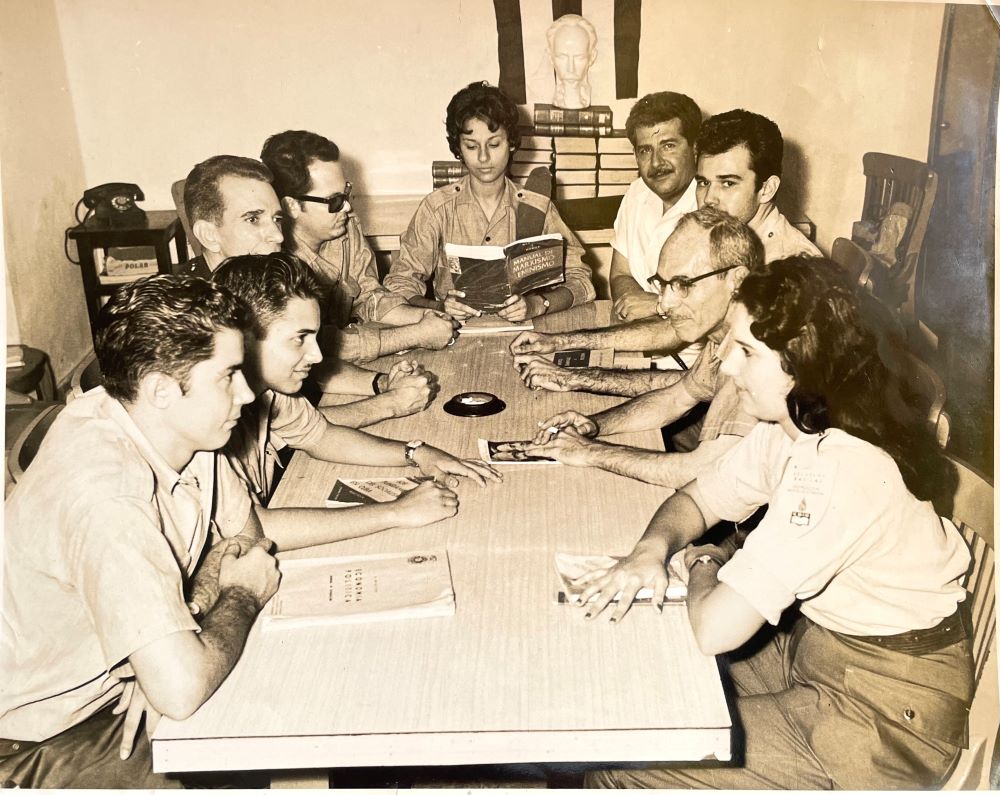Launched for a three-year run in 1962, “Basic Schools of Revolutionary Instruction” were designed to teach the principles of Marxist-Leninism to legions of Cuban workers who were enthusiastic supporters of Fidel Castro’s Revolution but knew next to nothing about Communism—including how or even why the government was supposed to own and plan the national economy. Hoping to boost productivity among all workers, officials relied on the EIBRs to develop cuadros (awkwardly translated from the Soviet word “cadre”). Cuadros in every workplace were supposed to inspire their peers through example and persuasion. They were also supposed to know the “right” answers to nagging, politically charged questions such as Why were elections no longer necessary? Or Why had so many foods once common in Cuba and not imported from the United States disappear? By 1965, EIBRs had graduated over 50,000 workers from night classes led by instructors like the ones shown here. The diversity of their expressions reflects a range of emotions, from discomfort to pride, probably in reaction to the obviously staged nature of the setting: quite literally, they had been asked to pose, not only with their Marxist manuals and bust of José Martí, but with each other, as if engaged in an ideological debate—about what? one might ask. Havana, 1964. Personal Collection of Rolando García Milián, used with permission.
